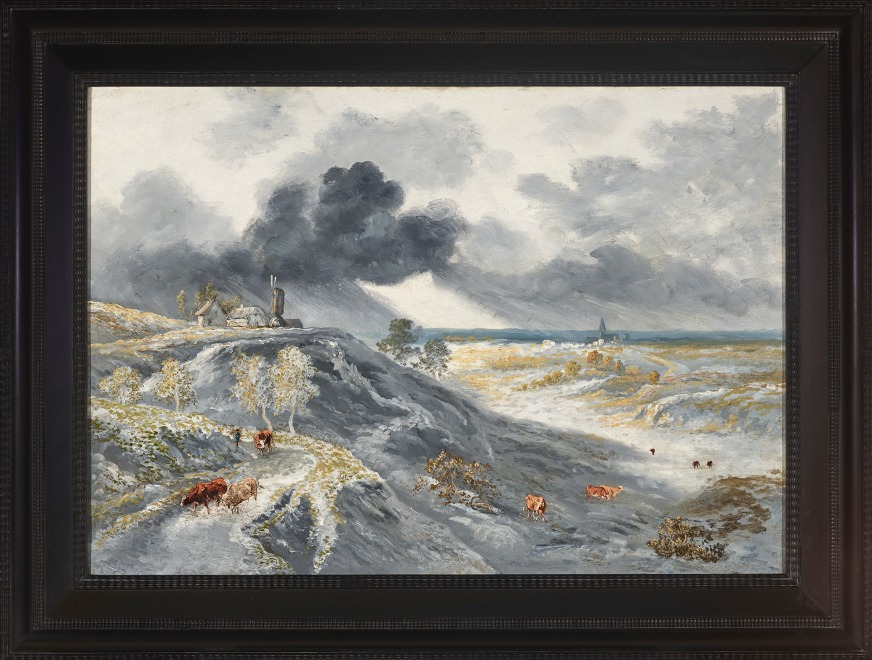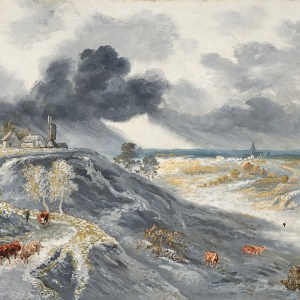Provenance
Exhibited
Bourg-en-Bresse, Monastère royal de Brou, October 6 2017-January 7 2018, Paris, Fondation Custodia, January 27- April 29 2018, Georges Michel 1763-1843, Le paysage sublime, no. 33
Literature
The painting will be included in the forthcoming Georges Michel catalogue raisonné by Michel Schulman
Catalogue note
Artists often become associated with the regions they choose to paint; one thinks of Rousseau and the Auvergne in the 1830s and his later works in Barbizon and Fontainebleau Forest. Corot had Ville d’Avray and Courbet had Ornans. The Paris suburbs were documented by Raffaëlli in his scenes of Asnières. And, with its windmills and quarries, it was Montmartre that found its champion in Georges Michel.
In the early 1800s, Montmartre was located on the outskirts of Paris. It was not until the 1860s that what had been a rural village became subsumed into the French capital. The following decade Montmartre became a popular destination for artists; this was the Montmartre that was immortalized in such paintings as Renoir’s Bal du Moulin de la Galette. However, George Michel’s Montmartre was different; it was rural and rugged as depicted in our winter scene. Painted circa 1800, Michel depicts a cowherd leading his cows in the snow. His palette is innovative in its simplicity – a combination of basically three colors: cool greys for the landscape and storm clouds and red-browns and yellow for the trees and cows, while various shades of white let us know that the ground is covered with snow. Little is known about Georges Michel; what we do know is that he never signed his paintings and was influenced by the masters of the Dutch Golden Age, especially Jacob van Ruisdael; in fact, Michel was often called the “Ruisdael of Montmartre.” While the lineage of our snow scene can be traced back to 17th century Holland, the overall impression made by the off-center composition, the uneven perspective and the turbulent atmosphere speak more of the individualism and uniqueness of Georges Michel. One cannot help but compare it to Courbet’s Young Ladies of the Village painted fifty years later (The Metropolitan Museum of Art, New York). Both paintings share a similar lack of traditional perspective and scale. What at first may seem awkward, instead results in an inherent modernity for each painter.
The painting will be included in the forthcoming Georges Michel catalogue raisonné by Michel Schulman




